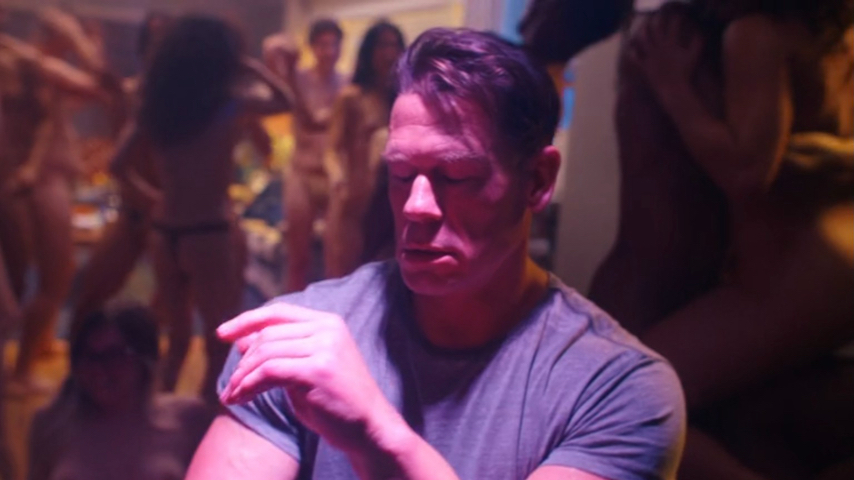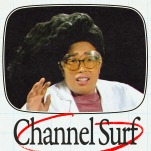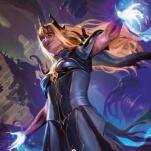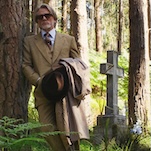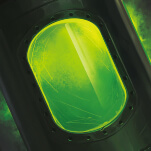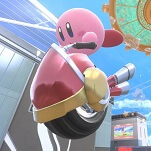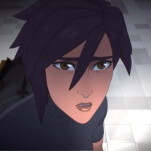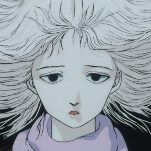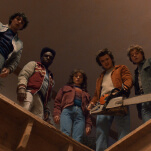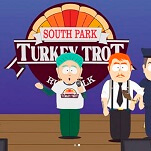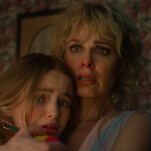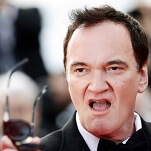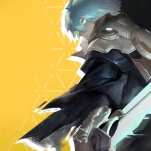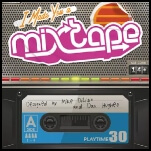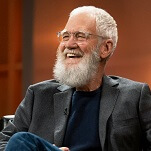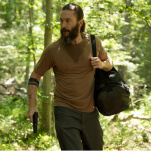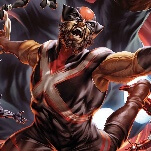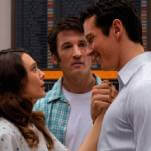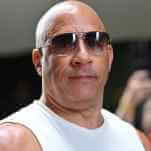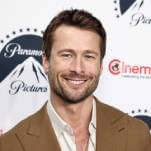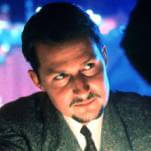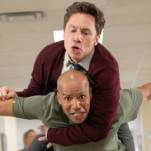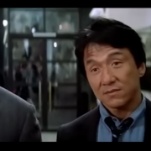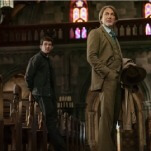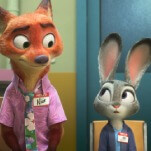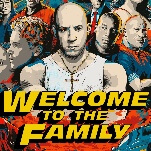Of course, the first season of Peacemaker pulled a version of this trick, too, with a quick cut in its own premiere to Chris mid-fuck with a tight-jeaned refugee from a hair-metal music video. But the Gunn that filmed that sequence—which shoves some naked breasts briefly into the camera before getting more chaste once it’s time for the participants to brutally murder each other—was in a very different position than the Gunn of Peacemaker season two. At the time, the writer-director was still operating pretty firmly in class-clown mode, happily hurling spitballs of nudity, profanity, and ultra-violence from the back of the room, much in the same vein as his 2021 DC debut The Suicide Squad. (That work was viewable as a reaction to the somewhat sanitized filmmaking he’d been doing for Marvel while they were busy firing and un-firing him from the job of making them massive amounts of money.) With a lot of personal freedom, and a superhero universe apparently operating without much in the way of guiding principles, it was only natural for Gunn to slip a little Slither or Super into the superhero soup.
But Peacemaker season two isn’t just “James Gunn blows off some steam in between writing heartfelt space raccoon monologues.” It’s The Third Official Installment in The Brand New DCU, a massive cross-media project on which god only knows how many of Warner Bros. Discovery’s various billions are riding. It was already wild that Gunn launched his and Peter Safran’s new endeavor with his other Suicide Squad TV spin-off, Creature Commandos, which is nearly as horny, and at least twice as violent, as Peacemaker has managed to be so far. But, taken as a whole, these Gunn projects also suggest there’s a method to the cock-and-headshot-heavy madness. The writer-director puts vulgar shit in his movies and shows because he genuinely enjoys it, yes. (You don’t have to go much further than hearing him talk, with gleeful regret, about having to cut a Superman sequence where Nicholas Hoult’s Lex Luthor used his dictator lackey as a towel to keep blood off his designer shoes to understand that he comes by the more darkly comedic elements of his work honestly.) But he’s also actively engaged, at this very moment, in the process of drawing up the parameters of what the DCU even is. These early sketches suggest that, sure, this is a superhero universe in which a Big Blue Boy Scout will fly around the world, trying to fix things with a certain amount of naive love in his heart; it’s also a place where some random dude can hang brain in the living room of a guy who’s fresh off hearing the boss of the Justice Gang talk about cameltoe.
Superhero universes tend, as a default, toward PG and PG-13 territory, because that’s where the money is—and also, honestly, the source material: Without throwing around reductive phrasings like “childish,” Superman is, by his very nature, a character that children can grasp, and Gunn’s joyfully squirrel-saving summer film embraced that fact wholeheartedly. (This is one of several things that sets his movie apart from the films of That Last Guy, who seemed determined to treat the existence of Kal-El of Krypton as a serious problem for serious people to try to solve.) The whole Marvel House Style, which Gunn first pushed against and then wound up being absorbed into with his Guardians Of The Galaxy movies, relies on operating in a fairly narrow band of acceptable themes and content, with heroes that might quip or kiss but almost never kill or fuck. Even the inevitable subversions have followed a predictable, safe pattern: We’ve watched reactionary superhero projects like The Boys and Invincible gain traction by following the same basic trajectory, massively sped up, that comics did in the ’80s and ’90s, fulfilling the natural urge to see that shining status quo get violently turned on its head.
With the one-two punch of Superman and Peacemaker season two, though, Gunn seems to be deliberately rejecting the idea that his superhero universe will have any such limits in either direction. By charting the extremes of both wholesomeness and excess, Gunn throws the doors open for the filmmakers who follow him to tell any kind of story they want sans constraints. The more shock-minded might find themselves relegated to streaming, sure, or explicit genre exercises like Mike Flanagan’s upcoming Clayface horror film. But superhero comics stopped operating in a single tone, or under a single code of acceptable conduct, decades ago. Writing the future in paeans to kindness and joyfully presented penises, Gunn suggests that it’s time for superhero TV and film to finally follow suit. Or, to put it another way: Clark Kent saves people because there is a deep and powerful need in him to do so. Chris Smith shoots guys, snorts coke, and repeatedly screws his life up for, basically, the exact same reason. In building his new DCU, Gunn makes deliberate strides to make room for both men to find their place.
